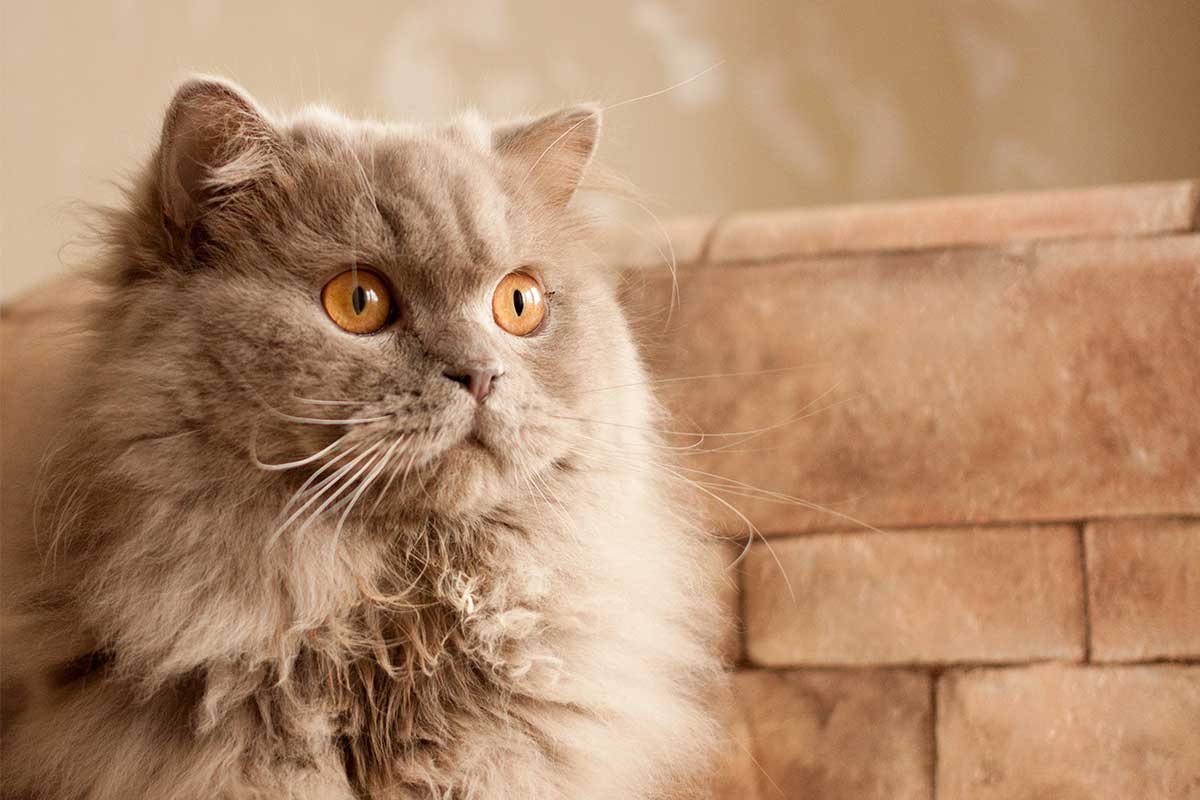Experts agree: When it comes to grooming longhaired kitties, starting young is the key to acceptance. A kitten who learns early to love and accept being groomed won’t have the fear that develops when grooming is rough or painful.
The first thing to know about grooming longhaired cats is that not all their coats are created equal. Anita Kelsey, a grooming and behavior expert in London, UK, says longhaired cats come with many different coat types. Persians, for instance, have a downy undercoat that requires regular attention, while the shaggy coat of a Maine Coon needs less, as does that of a Turkish Angora, whose coat rarely mats. She finds that Chinchilla Persians are most recalcitrant when it comes to grooming.
Kelsey is in the process of publishing a study on cat aggression during grooming.
“One hundred percent of my extremely aggressive cats had a past that involved a negative association to grooming, and therefore they are fearful,” she says.
That’s understandable. Left ungroomed, longhaired cats can develop mats, tangled clumps of fur that can accumulate beneath the legs, on the stomach, at the base of the tail, or in the nether regions. Cats have tissue-thin skin. If they are left uncombed, mats can be painful to the point of restricting movement.
Kelsey’s behavior expertise helps her deal with difficult grooming situations. For kitties not used to being groomed, she uses a gradual desensitization process.
“My methods are always geared towards the least possible stress for all concerned,” says Kelsey.
She recommends establishing a positive association with the brush by rewarding the cat with a treat when the cat starts to investigate it. Then move on to rubbing the brush against the cat’s cheek and letting her smell it, and stroking the cat with the brush in your hand. It’s important to remain calm, and praise the kitty while you’re working with her.
Keep grooming sessions short. One way to do this is to check daily for mats and comb them out before they become too tangled.
Choosing the right tools is important as well. Using the wrong tools or using tools incorrectly can cause a cat to dislike grooming. Kelsey recommends combing first, using a comb with differently spaced teeth. Only a comb can do the job of getting the downy under fur. After a thorough comb through, follow with a soft pin slicker brush to remove flyaway hairs from the top of the coat.
Unlike many groomers, Kelsey does not recommend the ubiquitous lion cut.
“I only do lion cuts when a cat is badly matted or cannot tolerate regular grooming due to behavior issues and there is no other option,” she says. “Cats regulate their body temp through their fur, so it is a myth that cats needs to be shaved in the summer.”
For people who are reluctant or unable to groom their longhaired cats, Kelsey recommends scheduling a professional grooming every six to eight weeks. Choose a Fear Free certified groomer who will have the knowledge and skills to handle a longhaired cat with tender loving care. At home, help maintain your cat’s positive association with grooming by combing her gently and briefly on a daily basis.
This article was reviewed/edited by board-certified veterinary behaviorist Dr. Kenneth Martin and/or veterinary technician specialist in behavior Debbie Martin, LVT








